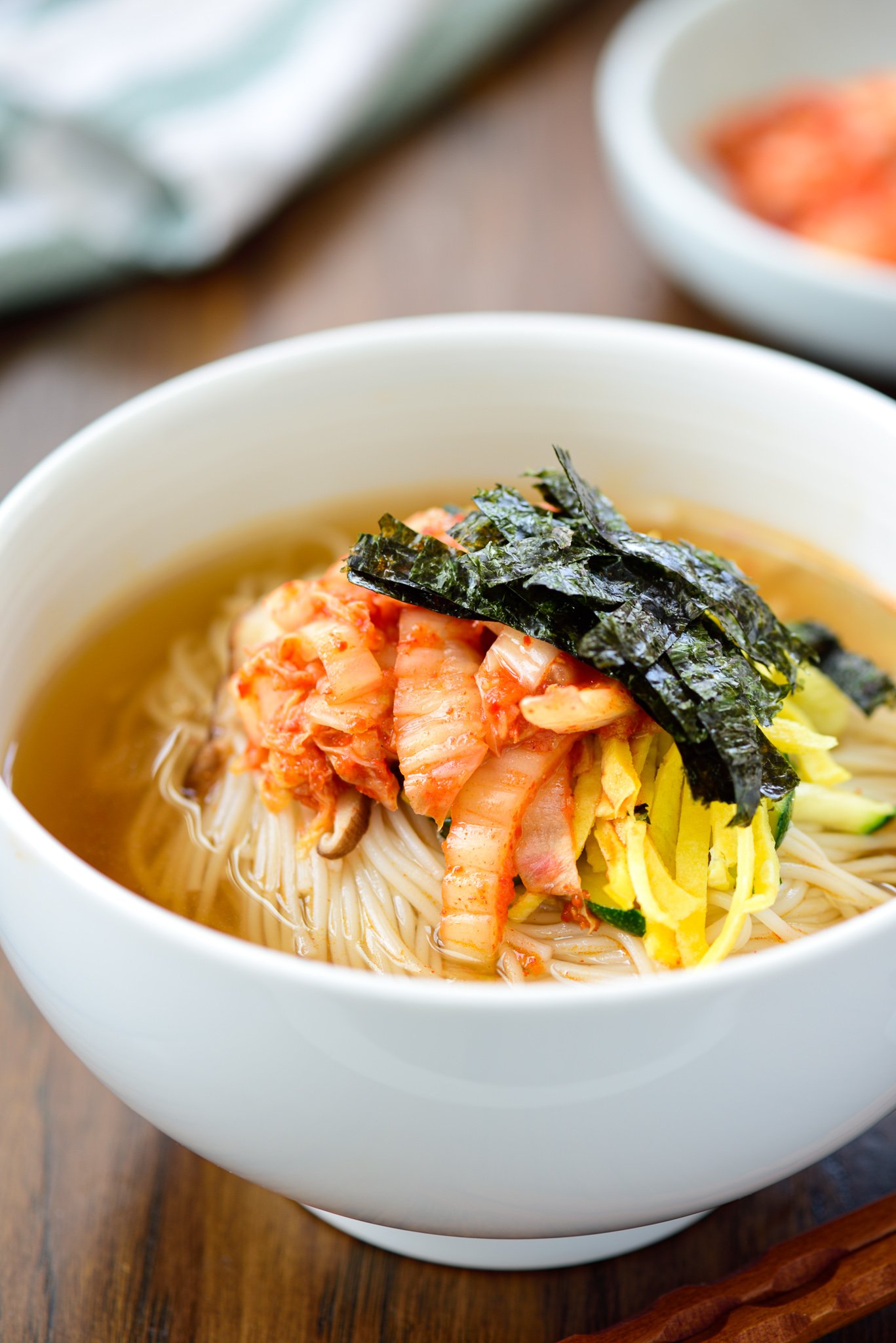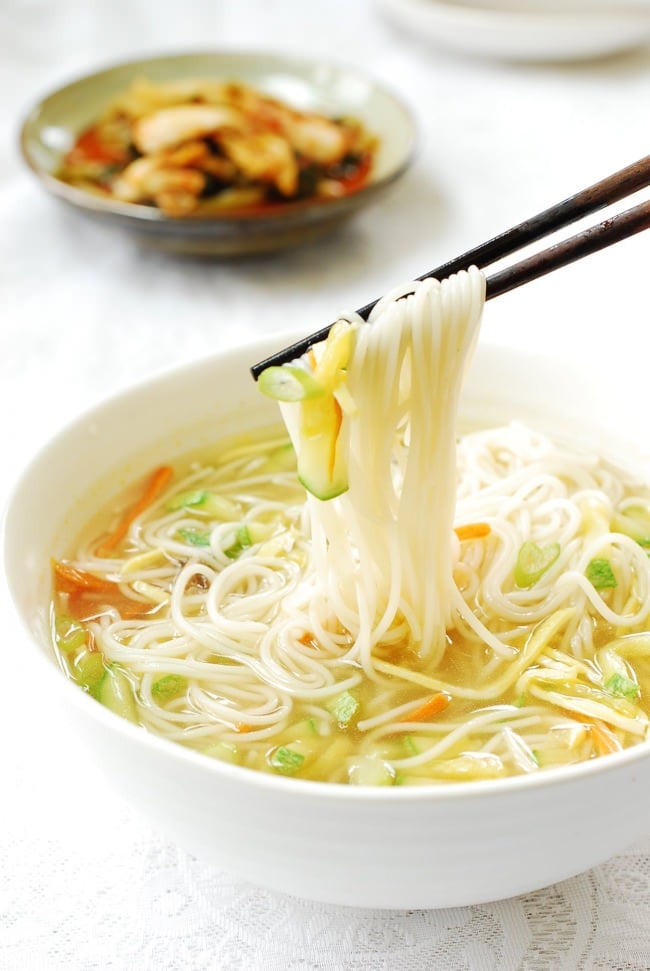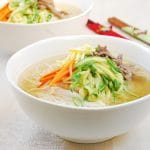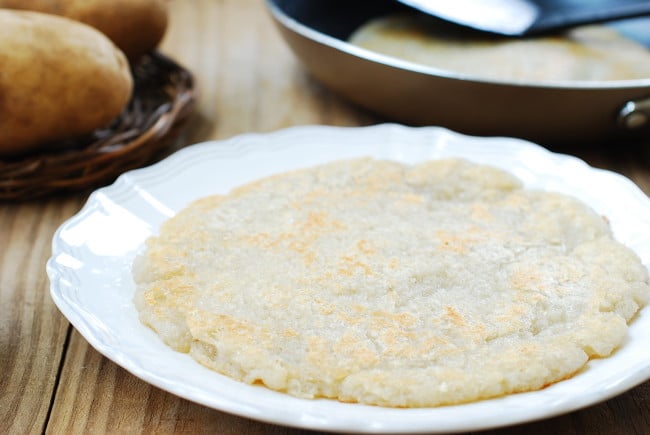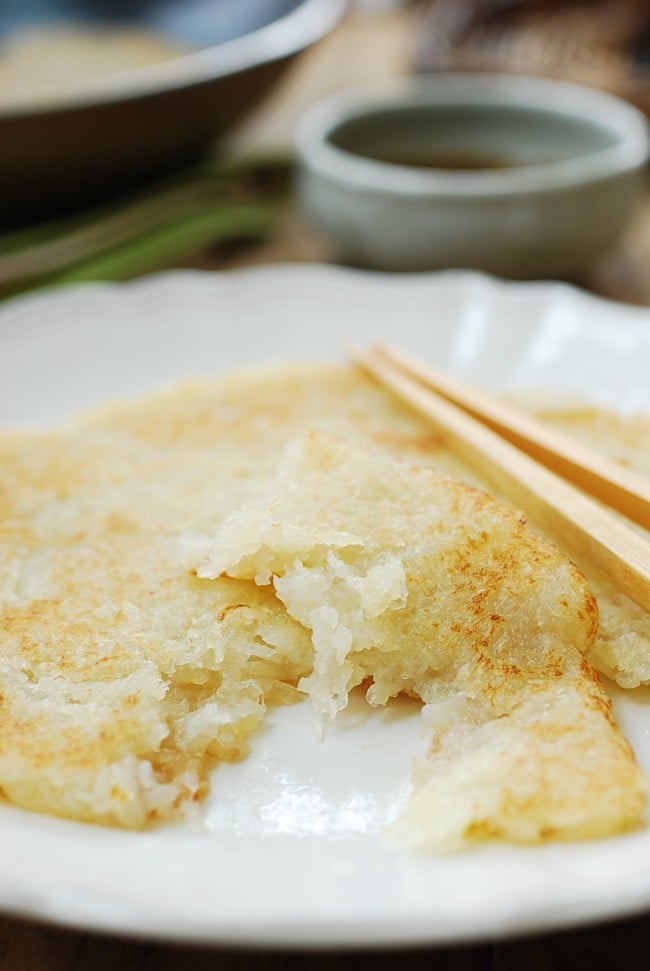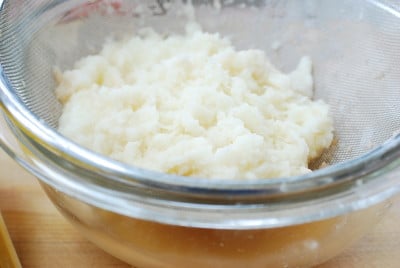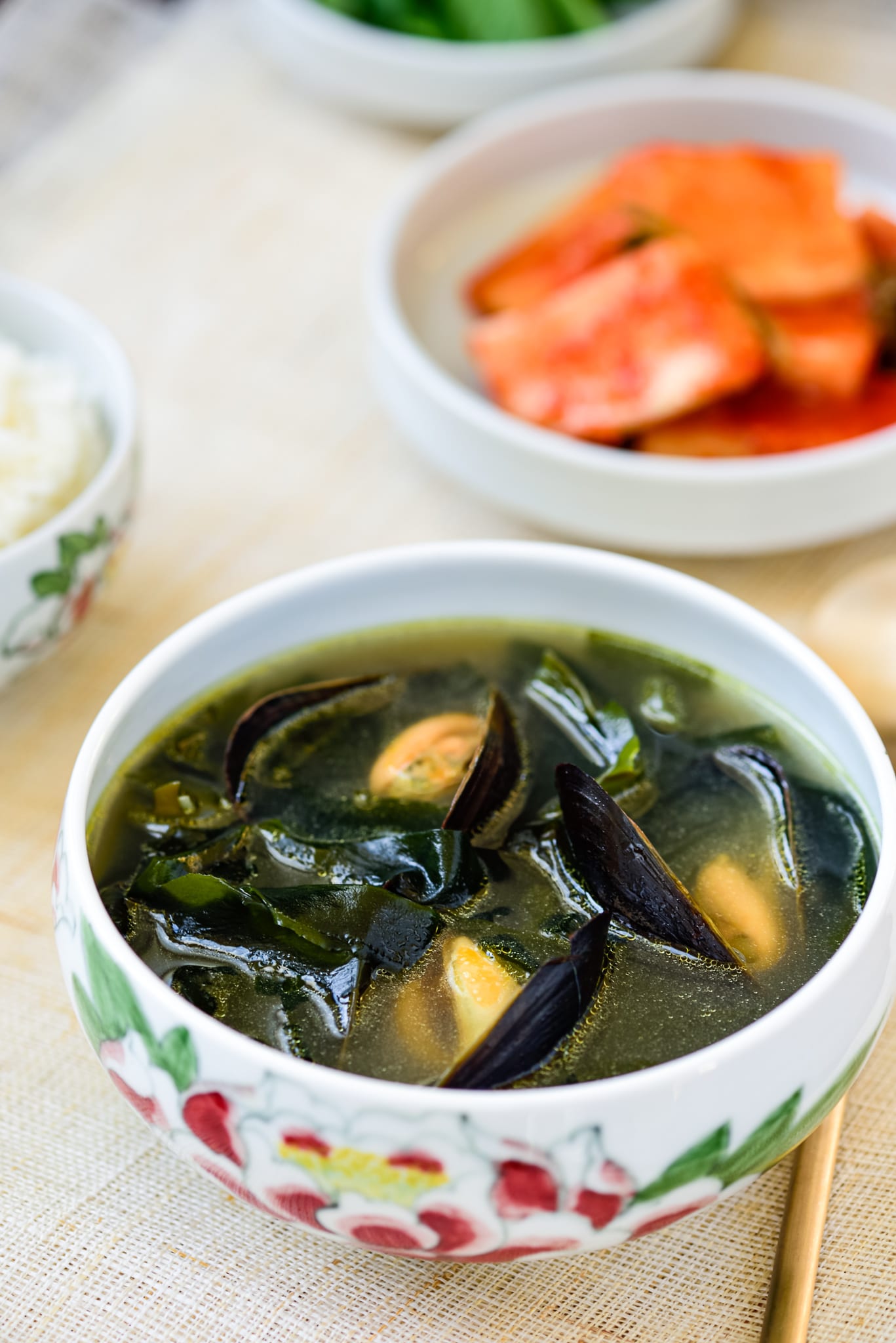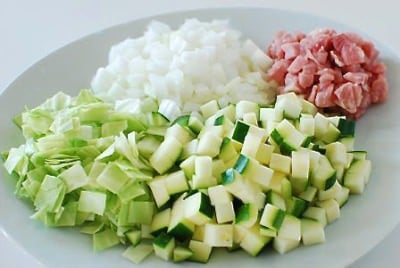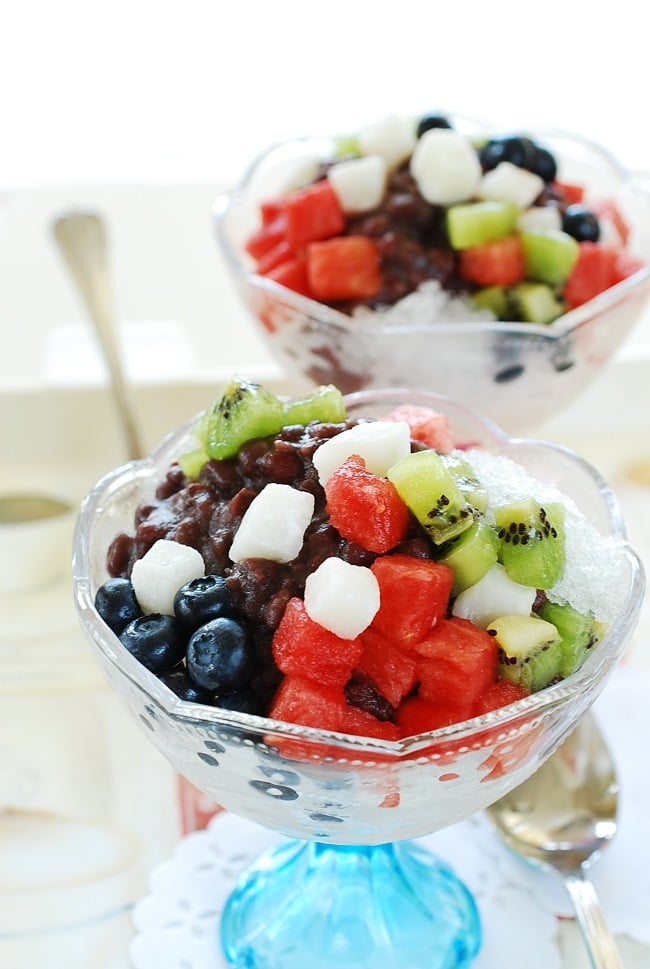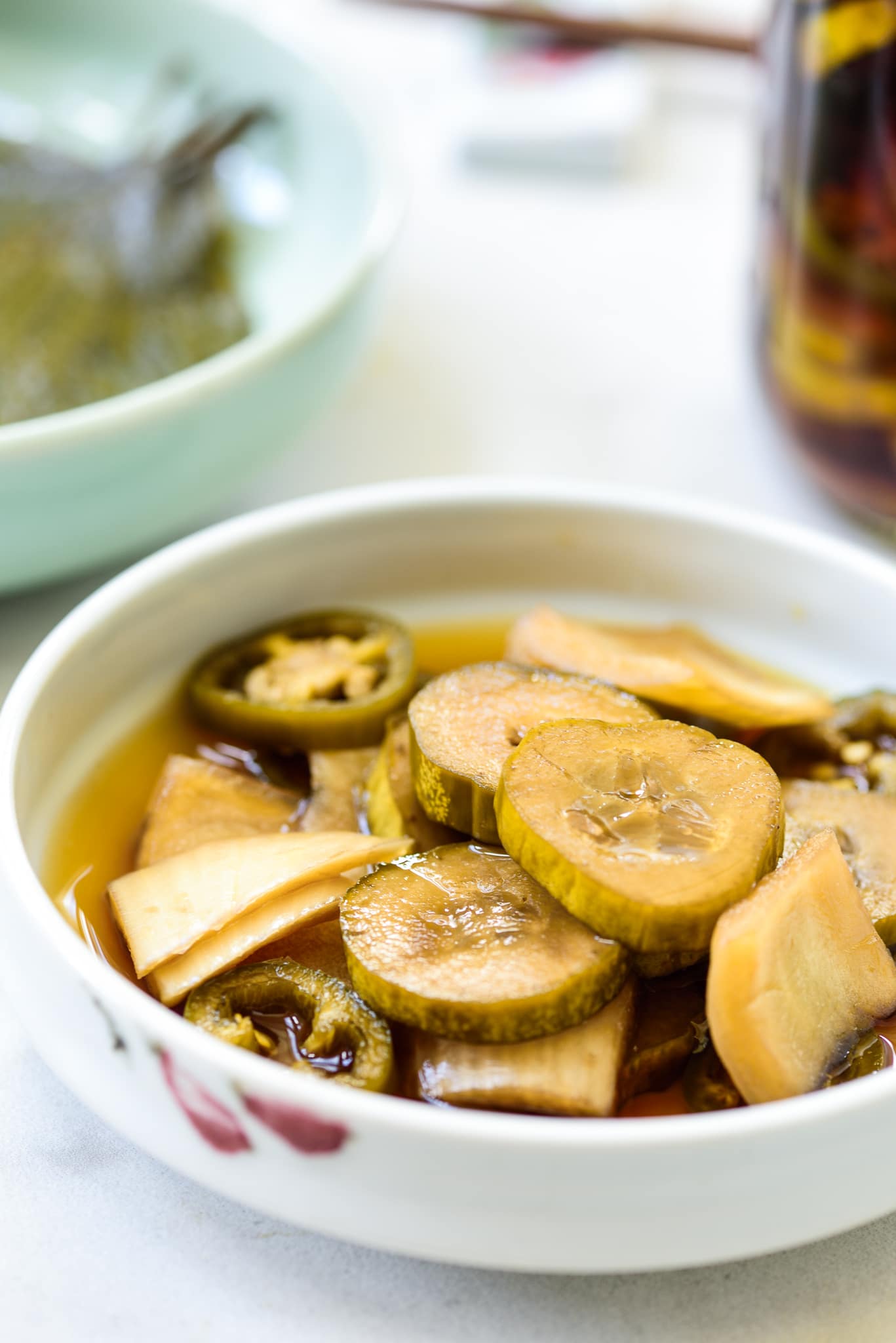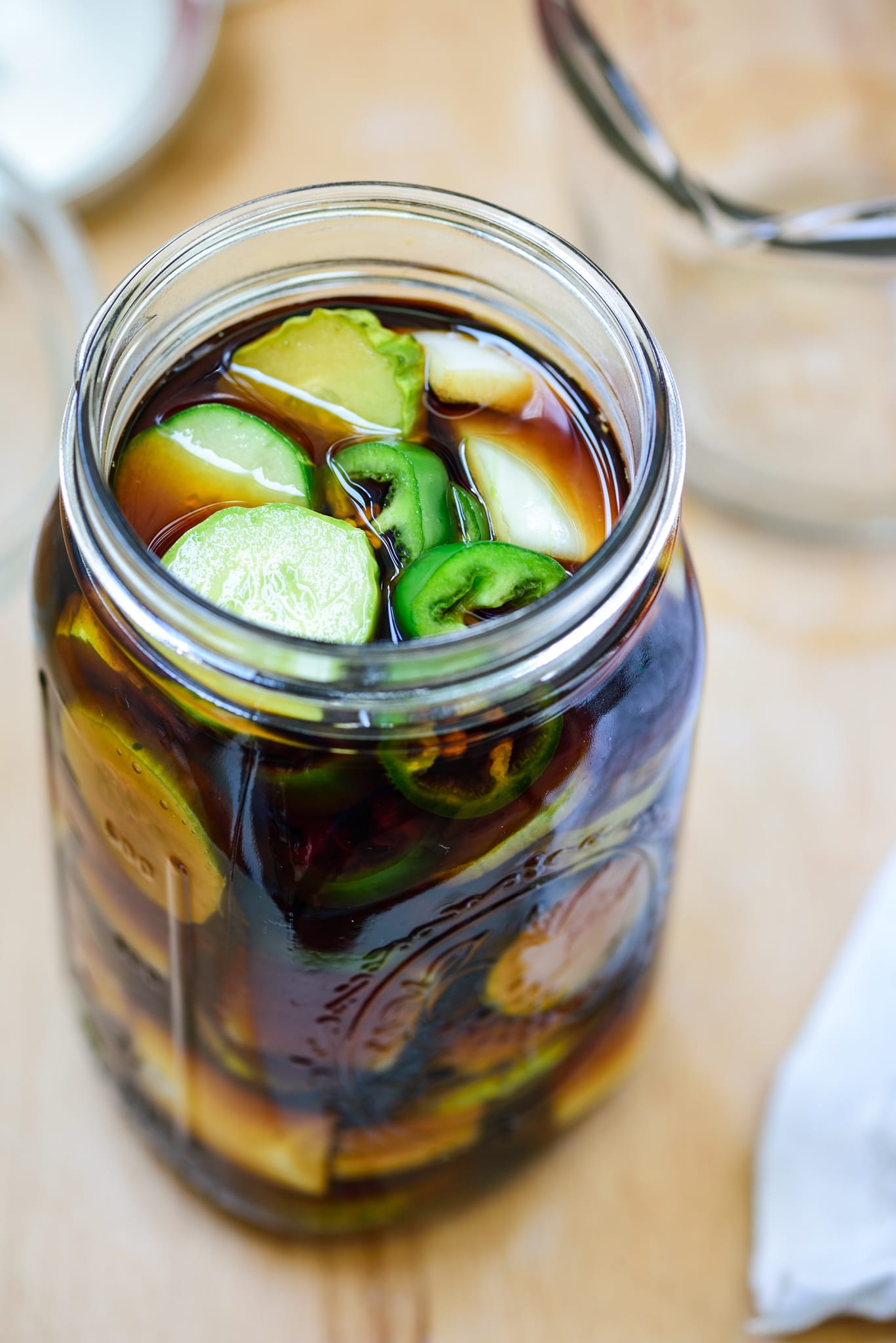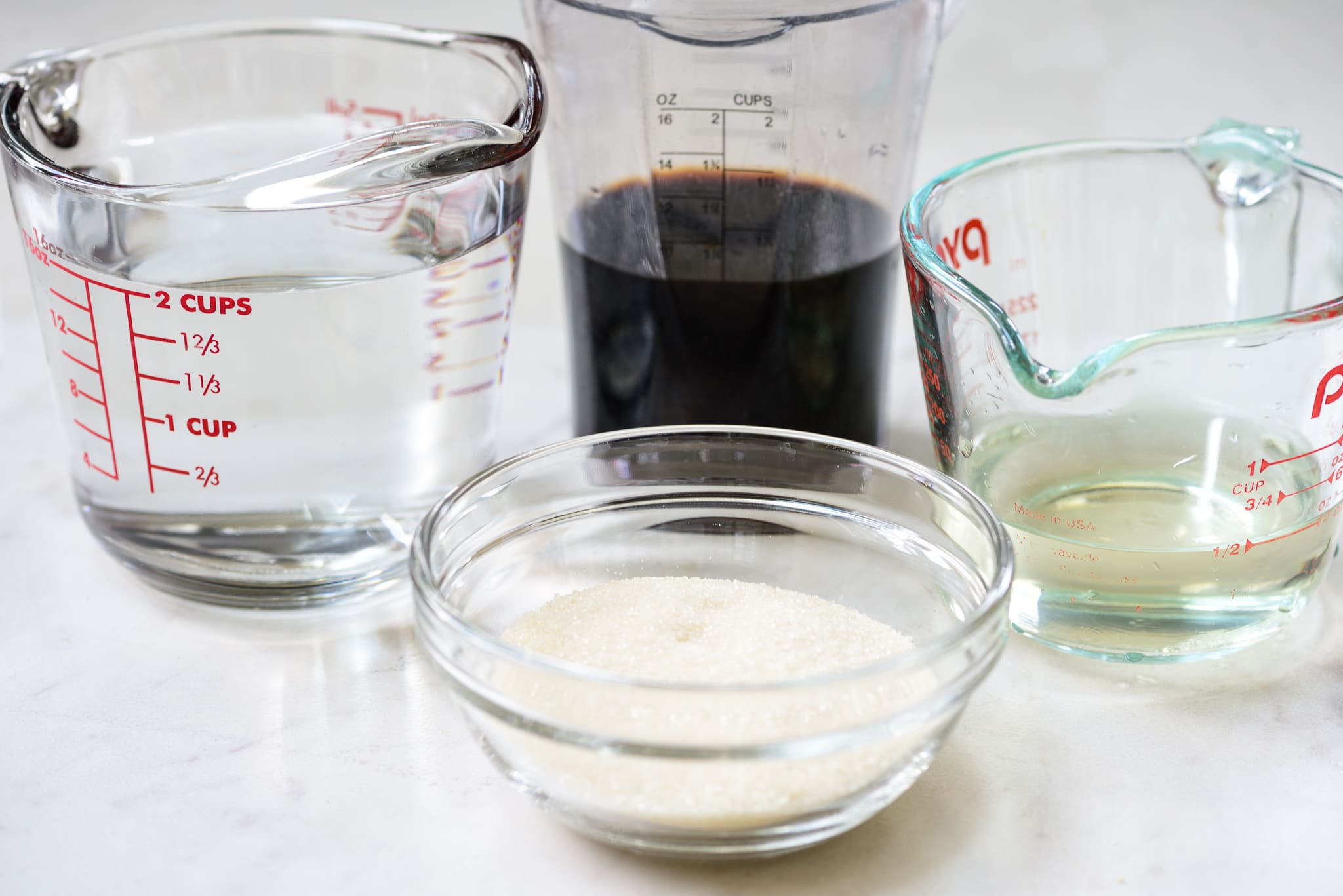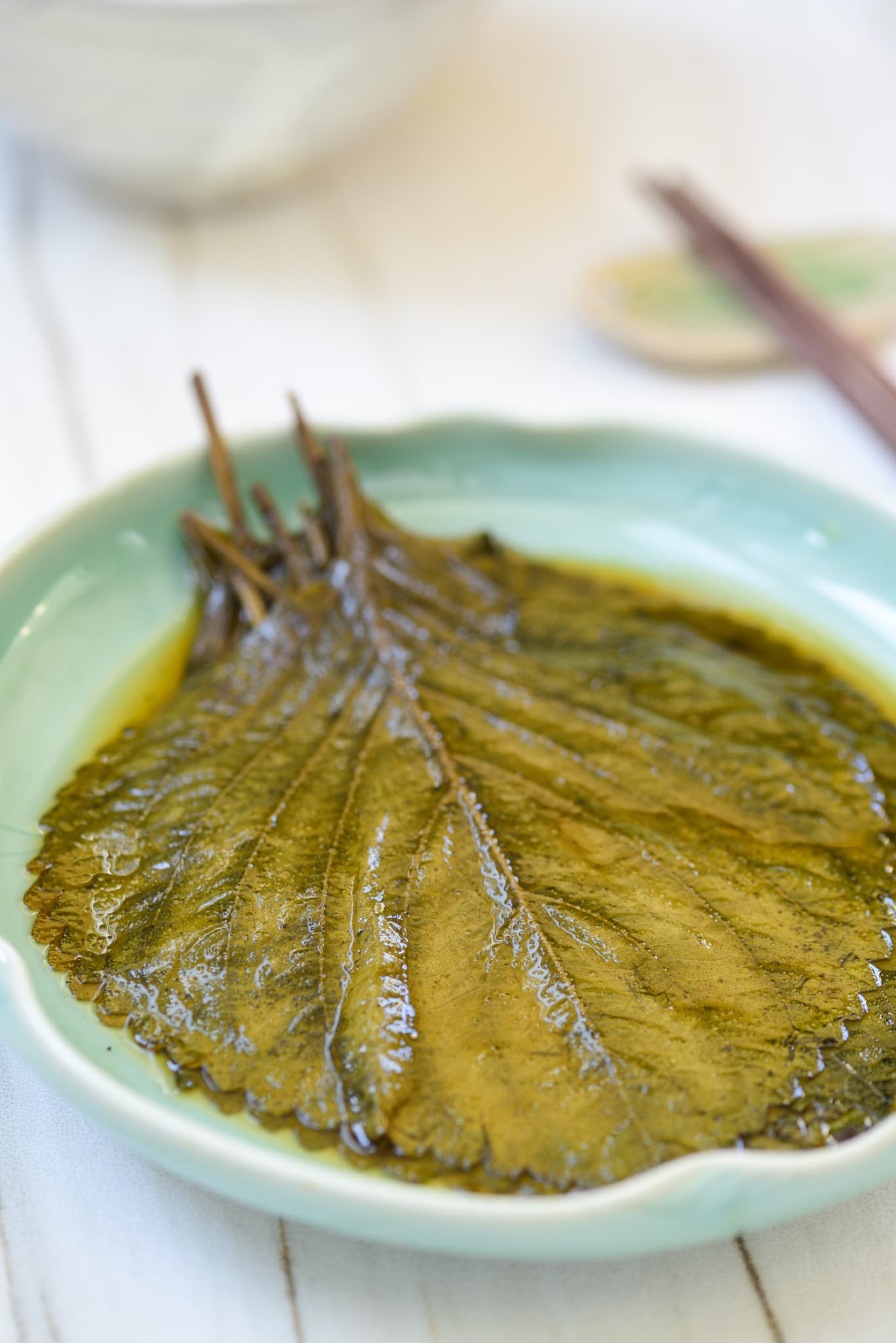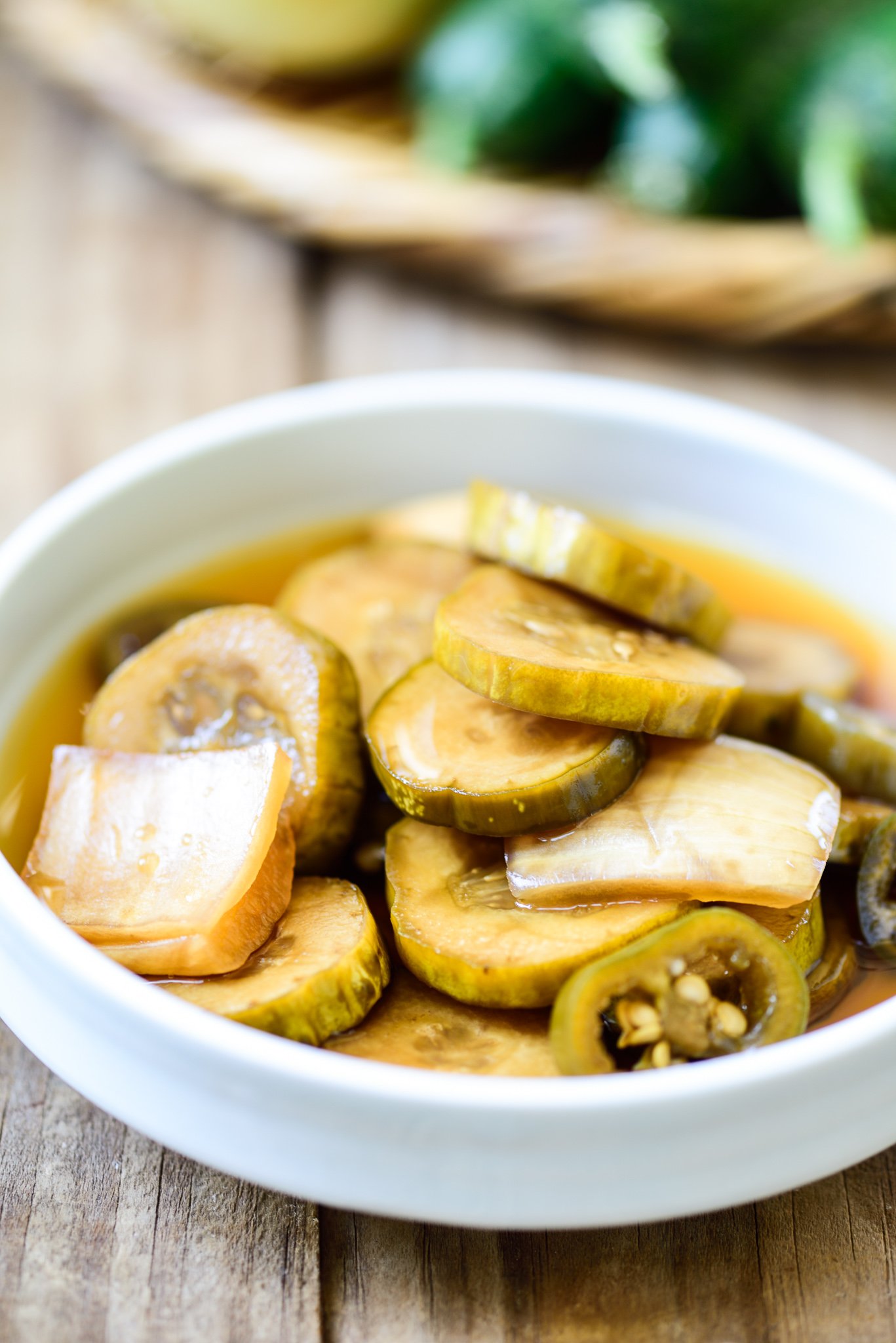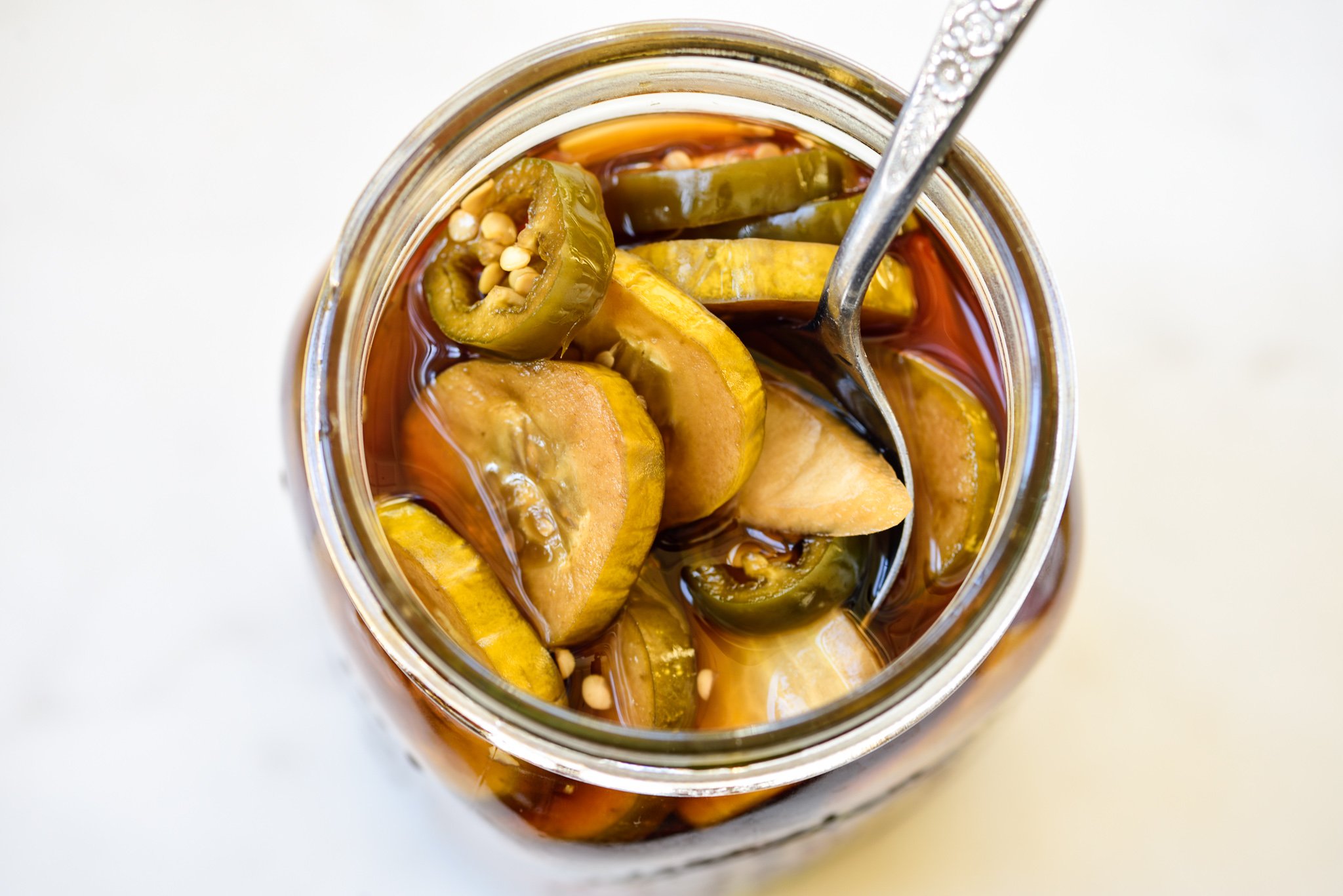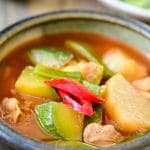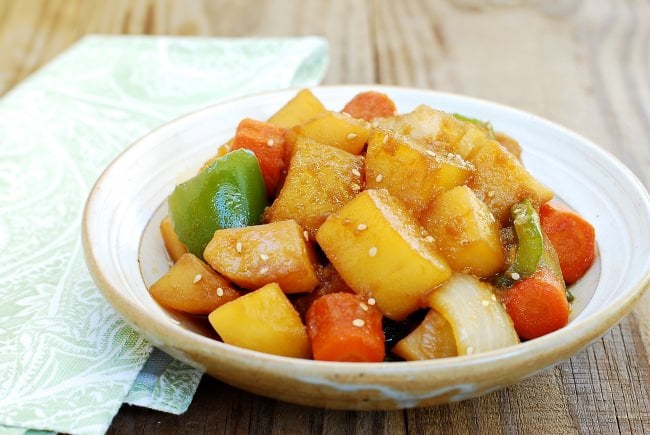Everything you need to know about how to best make these traditional tender, juicy and flavorful Korean short ribs in the Instant Pot!

Korean braised short ribs are called galbijjim (or kalbijjim, 갈비찜). There are 3 different galbijjim recipes on this blog – traditional, slow cooker and Instant Pot spicy versions. Now that I’ve tried many different ways to make Korean braised short ribs in the Instant Pot, I decided to do another post to share how to best make traditional galbijjim in the Instant Pot. I’ll also show you the choices available to you as you go through the process.
The basic cooking techniques for traditional galbijjim can generally be broken down into a few simple steps: soaking the ribs in water, parboiling to remove excess blood and fat, draining off and rinsing the ribs, simmering in the flavorful liquid on top of the stove.
Fortunately, the process is flexible and easily adaptable! I can assure you every Korean cook makes it differently. With the Instant Pot, it’s even easier and quicker to make these tender, juicy and flavorful short ribs!

Preparing the short ribs
Purchasing: Korean braised short ribs are typically made with bone-in short ribs. While meat cooked on the bone tastes better, you can use boneless if that’s all you can find. It will take a few minutes less to cook. Find good quality short ribs with the most meat and least fat.
Cleaning: Trim off any thick layers of fat without removing the thin, tough skin that holds the rib together. Rinse off the surface blood and bone dust in cold water.
Parboiling: In this Instant Pot adaptation, I didn’t soak the ribs, but you certainly can. I briefly parboiled the ribs (2 minutes on Manual) with a small amount of water. During the build-up of steam, the short ribs release blood and fat. Discard the cooking liquid (or reserve it to use as a soup base later) and rinse off the scums and fat. This step effectively removes excess blood and fat without losing much of the meaty flavor. Better yet, it doesn’t involve another pot!
I personally like this method, but you can braise the ribs without doing this step or brown the ribs instead if you like the rich browned meat flavor. However, initial browning of the meat is not typical in Korean traditional braising as Koreans generally look for a nicely clean sweet and savory taste from the braised meat.

The braising liquid
Aromatics: Similar to other classic Korean marinades, the braising liquid for galbijjim includes Korean pear, onion, garlic, and ginger. You can use an apple in place of pear. These aromatics are typically grated and added to the marinade or braising liquid.
Basic seasonings: The braising liquid for this dish is a classic Korean sweet and savory marinade, including soy sauce, sugar and sesame oil.
As a sweetener, I like to use a combination of honey and sugar for a rich flavor, but you can use all sugar (white or brown) or all honey. Be aware honey can be up to 1.5 times sweeter than sugar. Brown sugar contains molasses so it adds another layer of flavor, but it’s less sweeter than white sugar.
Rice wine is used as a tenderizer and flavor enhancer. You can use any type of rice wine, including mirin (or mirim). White wine works well too.
No water or broth: The most frequently asked question about the braising liquid for pressure or slow cooking is whether to add water or broth. The answer is no! The braising liquid includes a fair amount of liquid, and no significant evaporation of liquid happens during pressure or slow cooking. The addition of water or broth would unnecessarily dilute the braising liquid and flavors. With this recipe, you’ll end up with about 2 cups of sauce at the end, depending on the types and amounts of vegetables you added.

Vegetables and garnishes
The trio vegetables for Korean braised meat dishes are Korean radish (mu, 무), carrot and shiitake mushrooms. These vegetables hold up pretty well while being pressure cooked and contribute to a fullness of flavor. If you like the vegetables to have some crunch or you want to add some potatoes, you can add them after pressure cooking and cook on the Saute function in the sauce until softened.
Chestnuts, dates, pine nuts, and gingko nuts are customary garnishes that make this dish look very elegant, but the ribs will still be delicious without them if they are unavailable.
Braising the short ribs
Make ahead: You can do all the prep work up to adding the braising liquid to the short ribs the night before, and turn on the Instant Pot when you’re ready to cook. This, of course, marinates the ribs, which is a flavor contribution as well. You can also cook the ribs ahead of time, and simply heat up before serving. The flavor of short ribs improves over the next day or two.
Pressure cooking: In this recipe, I pressure cooked the ribs for 35 minutes, NPR 10 minutes. Then, I removed the ribs and vegetables, and strained the braising liquid (see more below). Put everything back into the Instant Pot. This is also a good point to add fresh vegetables such as potatoes. You can also add rice cakes (tteokbokki tteok) at this point if you want. Finally, I boiled everything together on Saute for 10 to 15 minutes.

Alternatively, you can cook the ribs all the way on Manual High Pressure (about 40 min) with NPR 10 minutes. Increase it to 45 minutes if your meat is thick and you want extra tender meat.
Strain the braising liquid: The decision to strain the braising liquid is a personal preference. I like to do it because the end result is more refined and cleaner. If you don’t strain it, the dish will look rustic as seen in the last photo below. If you choose to do it, use tongs or a slotted spoon to transfer the ribs to a plate or bowl. Then, pour the braising liquid through a strainer into a bowl.

Remove the fat: You can skim off the fat or use a fat separator, which is my personal choice. I love my fat separator and use it all the time. If you have time, you can also let the entire dish sit in the refrigerator for a few hours for the fat to solidify so it can be removed effortlessly.
More Instant Pot Recipes:
Instant Pot Spicy Galbijjim
Instant Pot Kkorijjim (Oxtail)
Pressure Cooker Dakbokkeumtang (Spicy Chicken Stew)
Instant Pot Boiled Chicken and Rice
Instant Pot Kimchi Jjigae

Have you tried this Instant Pot Korean Short Ribs recipe? Please rate the recipe below and leave a comment! Stay in touch by following me on YouTube, Pinterest, Twitter, Facebook, and Instagram.

Instant Pot Korean Short Ribs
Equipment
- I used 6 quart Instant Pot.
Ingredients
- 3.5 pounds beef short ribs
- 8 ounces Korean radish mu, cut into large chunks
- 1 medium carrot cut into large chunks
- 3 to 4 fresh or dried shiitake mushrooms briefly soaked, halved or quartered
Braising liquid:
- 1/2 medium Korean/Asian pear or 1 small apple grated (about 1/2 cup)
- 1/2 medium onion grated (about 1/4 cup)
- 2 tablespoons minced garlic
- 1 teaspoon grated ginger
- 1/2 cup soy sauce
- 1/2 cup rice wine (or mirin or dry white wine)
- 5 tablespoons sugar (or 3 TB sugar and 2 TB honey) Reduce sugar by 1 TB for less sweet ribs
- 2 tablespoons sesame oil
- pepper to taste 1/4 teaspoon
Other additions and garnishes:
- 5 to 6 chestnuts peeled - optional
- 2 scallions roughly chopped
Instructions
- Trim off any thick layer of surface fat. In the pot, rinse the ribs with cold water a couple of times to remove surface blood and bone dust.
![Beef short ribs Cleaning beef short ribs]()
- Drain, and fill the pot with 4 cups of water to cover the ribs. Close the lid tightly. Press the “Manual” function and High Pressure, and using the “-” button, adjust the time to 2 minutes. Make sure the pressure switch is turned to “sealing”. When finished, carefully released the pressure.
![Boiling short ribs Cooking short ribs in Instant Pot]()
- Discard the cooking liquid (or save to use it as a soup base later), and rinse the ribs and the pot. Return the ribs to the pot.
![Beef short ribs Korean short ribs]()
- In a small blender, blend together the pear, onion, garlic, and ginger. You can separately grate them if you want. Transfer to a bowl. Mix well with the remaining braising liquid ingredients.
![Braising liquid for galbijjim Braising liquid for galbijjim]()
- Add the vegetables to the pot. Pour the braising liquid over to the ribs. Toss everything well to coat the ribs evenly. (You can prepare up to this point ahead of time.) Close the lid tightly. Pressure cook the ribs for 35 minutes, NPR 10 minutes. (See the quicker alternative method below.) Then, remove the ribs and vegetables to a large bowl or plate.
![Pressure cooker Korean short ribs Pressure cooker galbijjim]()
- Strain the braising liquid. You can skim off the fat or use a fat separator.
![Braising liquid for galbijjim Straining the braising liquid]()
- Put everything back to the Instant Pot. This will be a good point to add fresh vegetables such as potatoes or even rice cake (tteokbokki tteok) if you want. Boil everything together on Saute for 10 to 15 minutes.
![Instant Pot Kalbijjim Korean braised short ribs]()
- Alternatively: Press the “Manual” function, 40 minutes (45 minutes if your meat is thick and you want extra tender meat), NPR 10 minutes. Strain the braising liquid if you want. You can skim off the fat or use a fat separator.
- Garnish with the optional scallions and sesame seeds.
The post Instant Pot Korean Short Ribs appeared first on Korean Bapsang.









